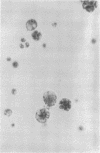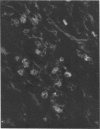Abstract
Studies were carried out to develop fluorescent antibody reagents for the identification of the Prototheca species and for their differentiation from morphologically similar fungi of various genera in formalin-fixed tissues. Antisera against representative isolates of P. filamenta, P. moriformis, P. stagnora, P. wickerhamii, and P. zopfii were produced in rabbits. Antiglobulins, labeled with fluorescein-isothiocyanate that intensely stained most cells of the homologous species, were selected for use as potential diagnostic reagents. By adsorbing the conjugates with selected heterologous cross-staining protothecae, reagents that were both sensitive and specific were obtained. Evaluation of the adsorbed conjugates with sections of tissue infected with protothecae, sections of tissue infected with morphologically similar fungi, and cultures of protothecae showed that these reagents are useful for the rapid and reliable identification of the Prototheca species.
Full text
PDF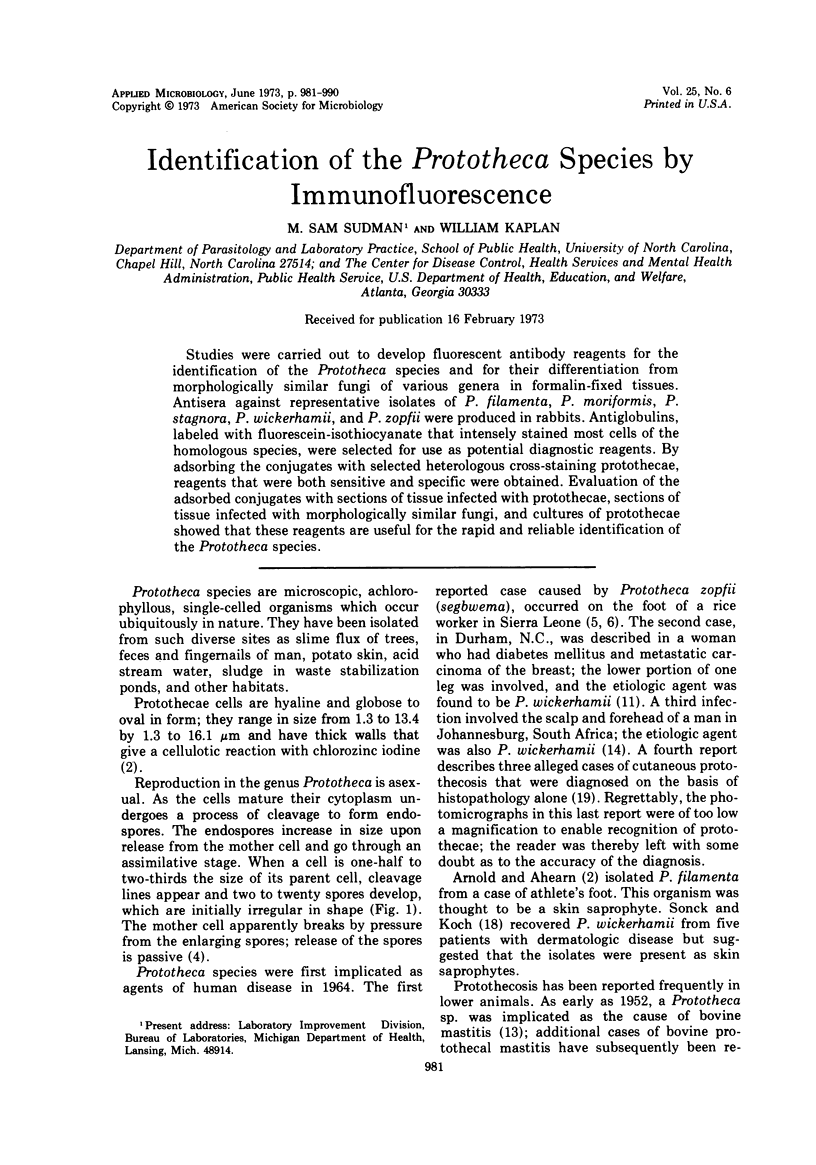
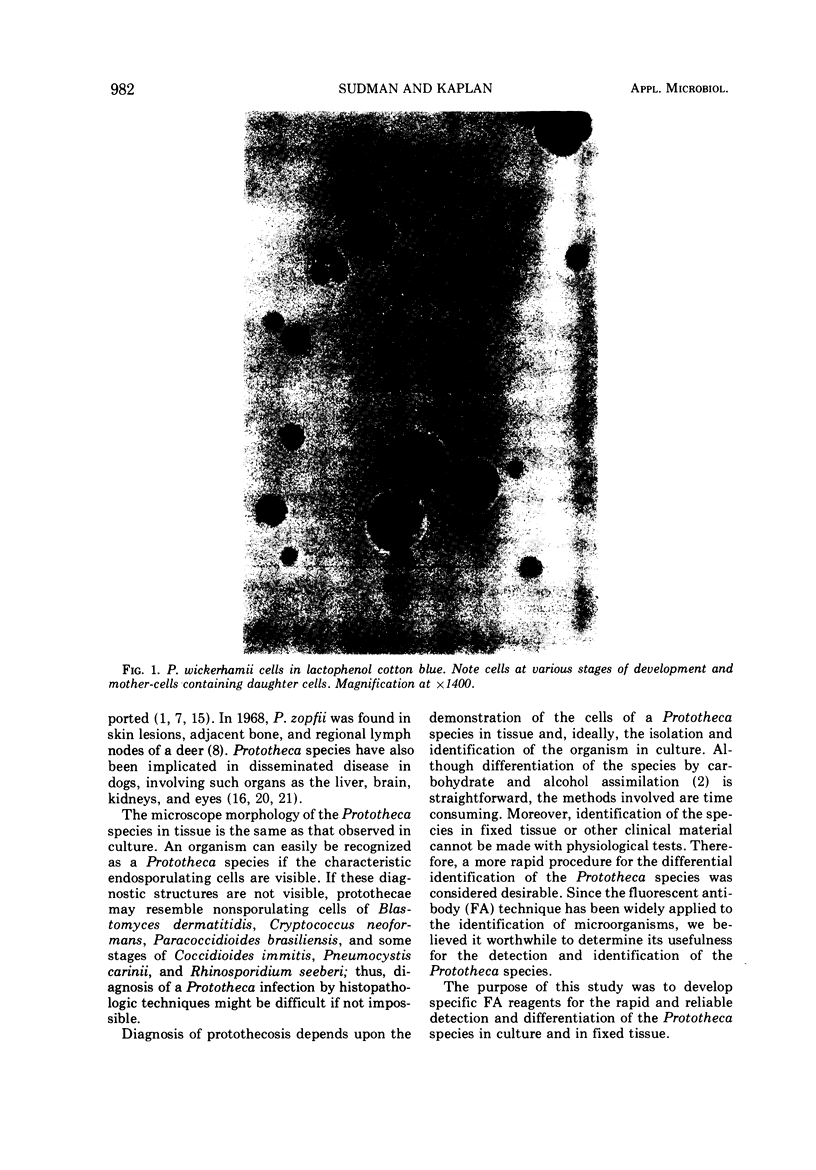
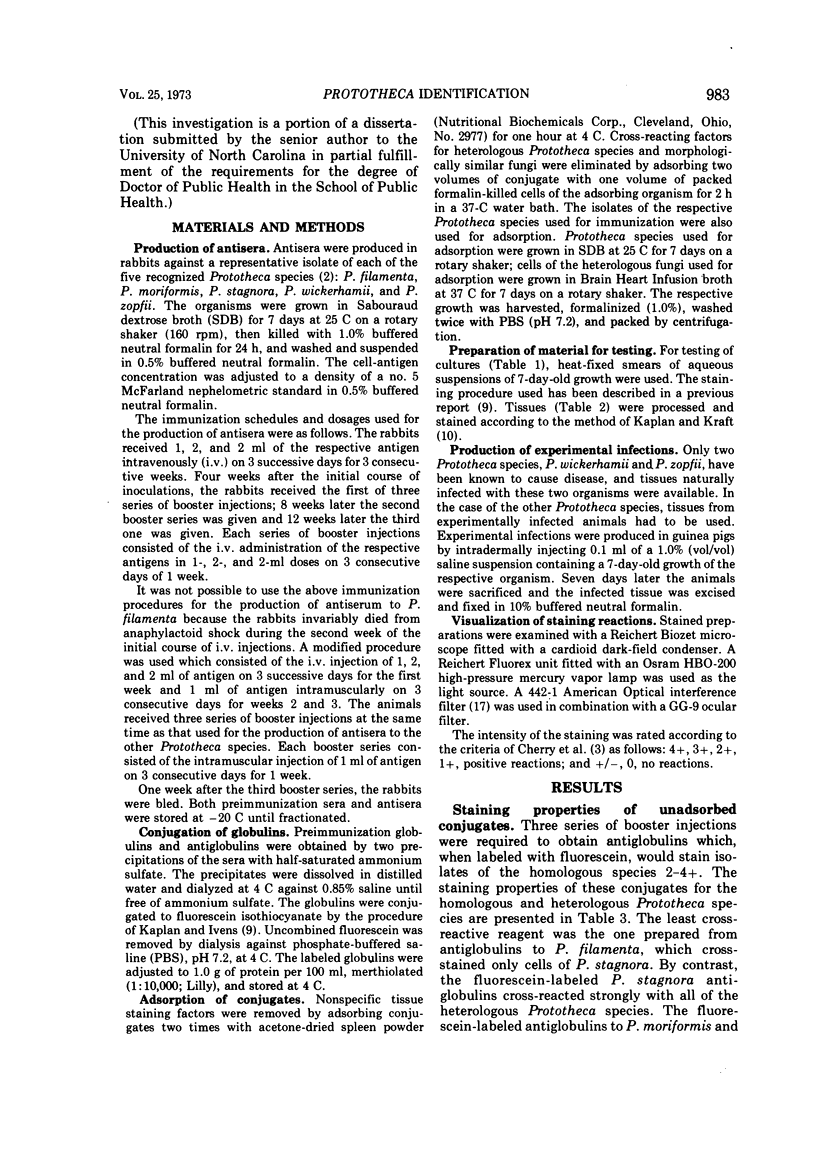
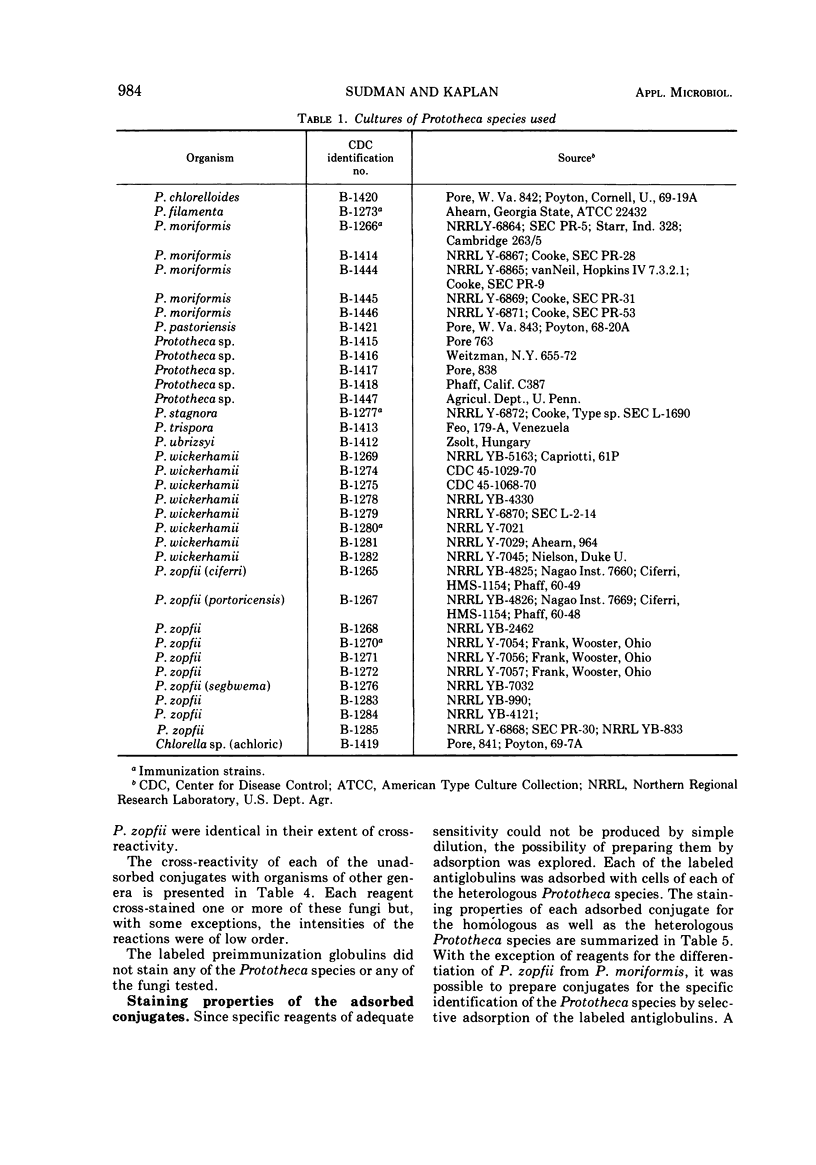
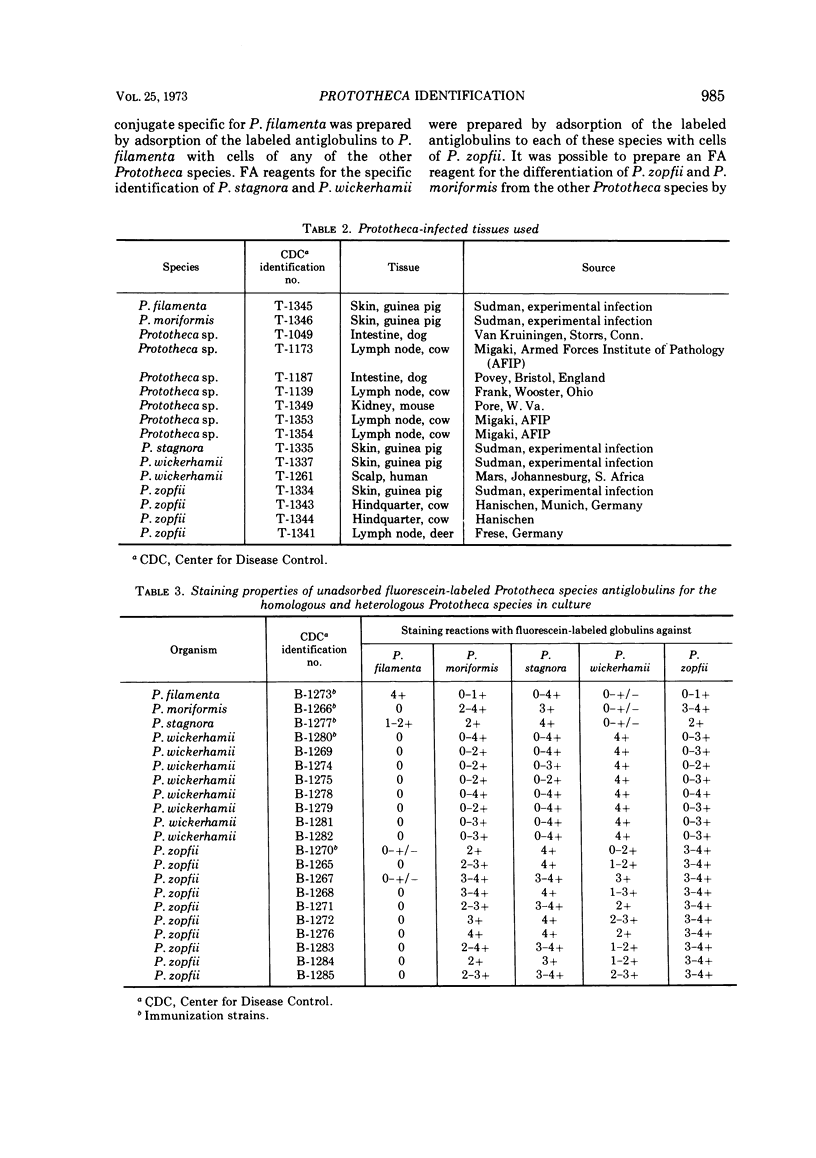
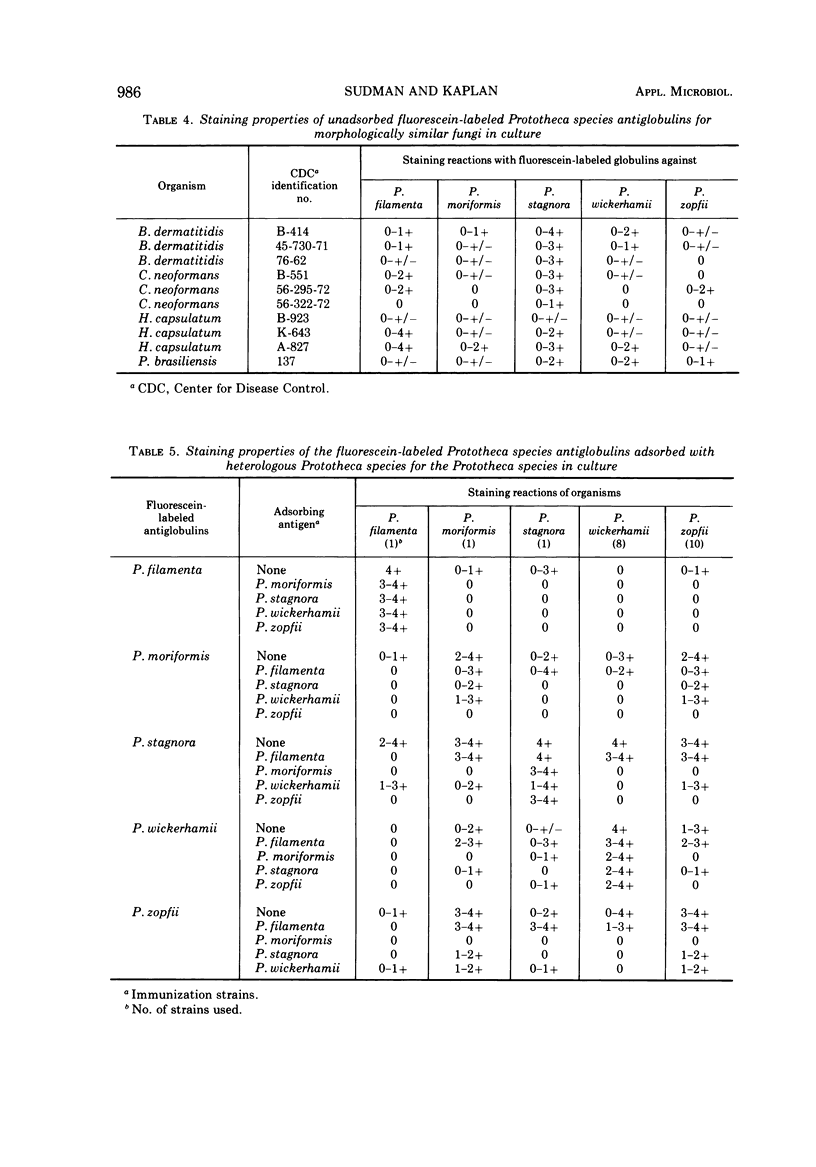
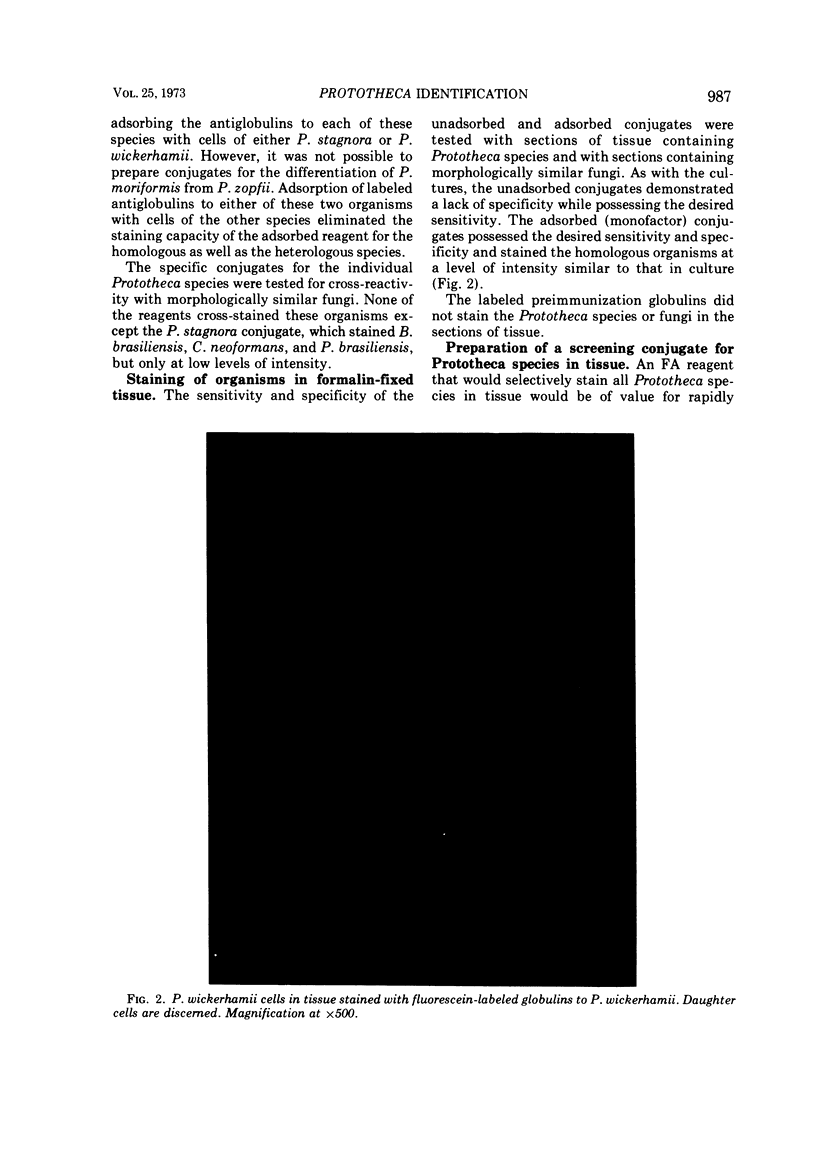
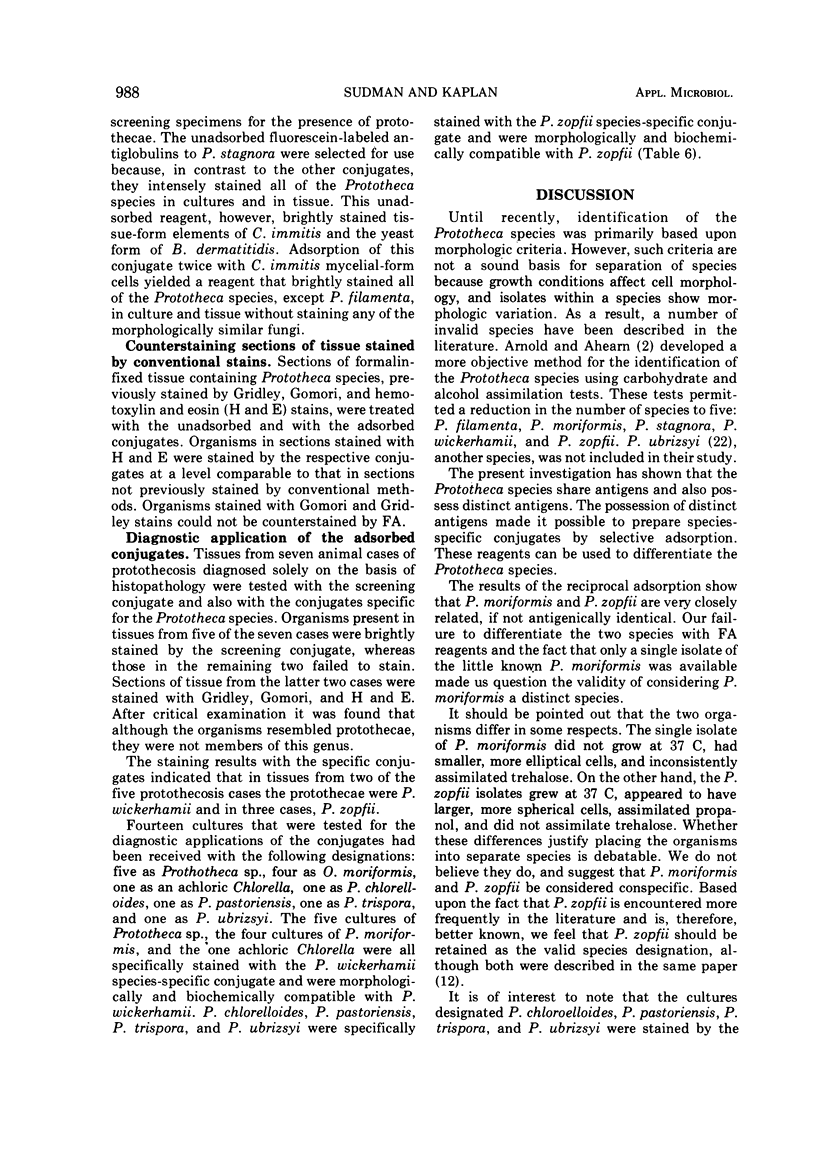
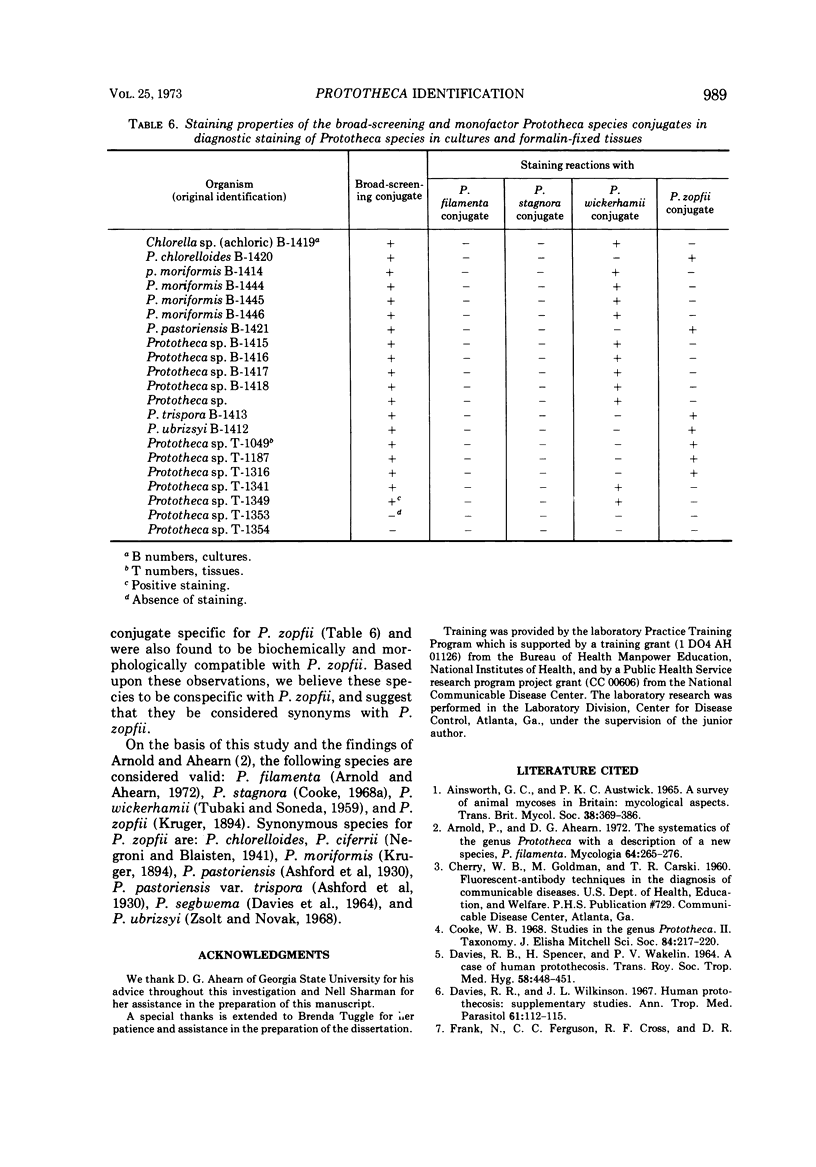
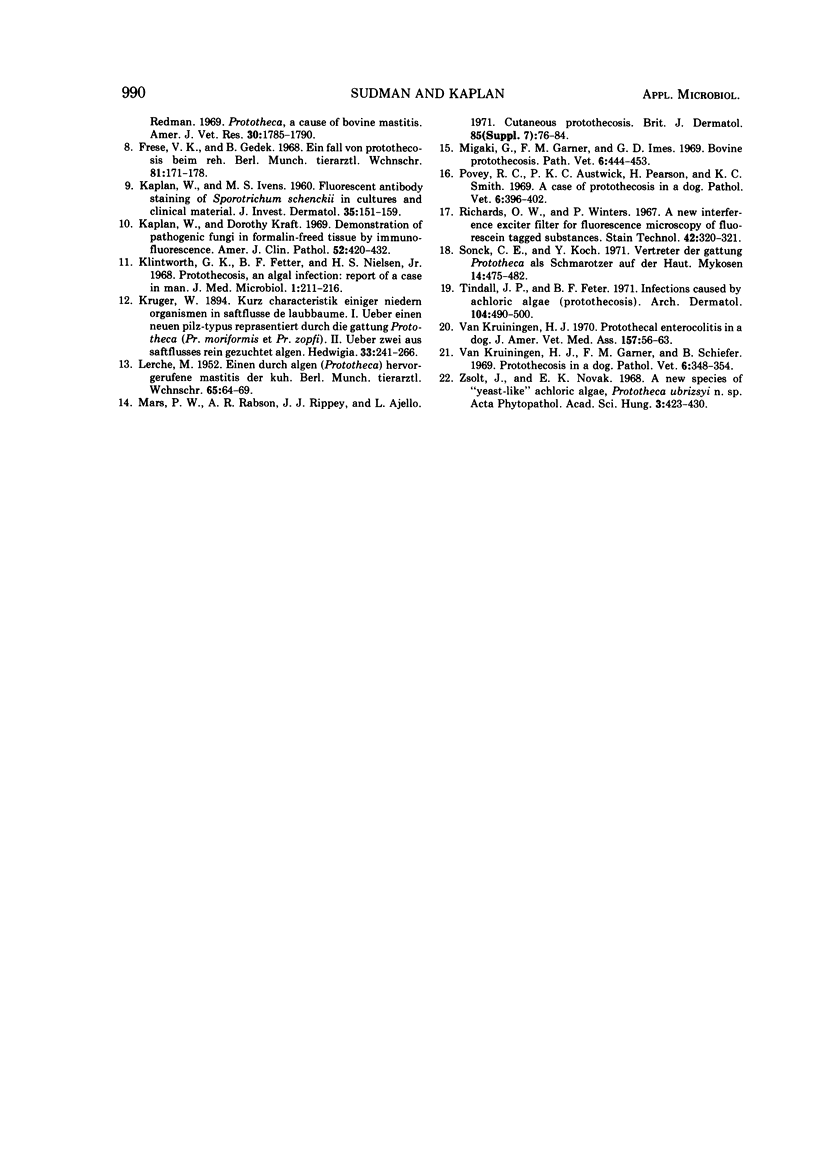
Images in this article
Selected References
These references are in PubMed. This may not be the complete list of references from this article.
- DAVIES R. R., SPENCER H., WAKELIN P. O. A CASE OF HUMAN PROTOTHECOSIS. Trans R Soc Trop Med Hyg. 1964 Sep;58:448–451. doi: 10.1016/0035-9203(64)90094-x. [DOI] [PubMed] [Google Scholar]
- Davies R. R., Wilkinson J. L. Human protothecosis: supplementary studies. Ann Trop Med Parasitol. 1967 Mar;61(1):112–114. doi: 10.1080/00034983.1967.11686466. [DOI] [PubMed] [Google Scholar]
- Frank N., Ferguson L. C., Cross R. F., Redman D. R. Prototheca, a cause of bovine mastitis. Am J Vet Res. 1969 Oct;30(10):1785–1794. [PubMed] [Google Scholar]
- Frese K., Gedek B. Ein Fall von Protothecosis beim Reh. Berl Munch Tierarztl Wochenschr. 1968 May;81(9):174–178. [PubMed] [Google Scholar]
- KAPLAN W., IVENS M. S. Fluorescent antibody staining of Sporotrichum schenckii in cultures and clinical materials. J Invest Dermatol. 1960 Sep;35:151–159. doi: 10.1038/jid.1960.99. [DOI] [PubMed] [Google Scholar]
- Kaplan W., Kraft D. E. Demonstration of pathogenic fungi in formalin-fixed tissues by immunofluorescence. Am J Clin Pathol. 1969 Oct;52(4):420–432. doi: 10.1093/ajcp/52.4.420. [DOI] [PubMed] [Google Scholar]
- Klintworth G. K., Fetter B. F., Nielsen H. S., Jr Protothecosis, an algal infection: report of a case in man. J Med Microbiol. 1968 Nov;1(2):211–216. doi: 10.1099/00222615-1-2-211. [DOI] [PubMed] [Google Scholar]
- Migaki G., Garner F. M., Imes G. D., Jr Bovine protothecosis. A report of three cases. Pathol Vet. 1969;6(5):444–453. doi: 10.1177/030098586900600508. [DOI] [PubMed] [Google Scholar]
- Povey R. C., Austwick P. K., Pearson H., Smith K. C. A case of protothecosis in a dog. Pathol Vet. 1969;6(5):396–402. doi: 10.1177/030098586900600503. [DOI] [PubMed] [Google Scholar]
- Richards O. W., Waters P. A new interference exciter filter for fluorescence microscopy of fluorescein-tagged substances. Stain Technol. 1967 Nov;42(6):320–321. [PubMed] [Google Scholar]
- Sonck C. E., Koch Y. Vertreter der Gattung Prototheca als Schmarotzer auf der haut. Mykosen. 1971 Oct 1;14(10):475–482. [PubMed] [Google Scholar]
- Tindall J. P., Fetter B. F. Infections caused by achloric algae (protothecosis). Arch Dermatol. 1971 Nov;104(5):490–500. [PubMed] [Google Scholar]
- Van Kruiningen H. J., Garner F. M., Schiefer B. Protothecosis in a dog. Pathol Vet. 1969;6(4):348–354. doi: 10.1177/030098586900600404. [DOI] [PubMed] [Google Scholar]
- Van Kruiningen H. J. Protothecal enterocolitis in a dog. J Am Vet Med Assoc. 1970 Jul 1;157(1):56–63. [PubMed] [Google Scholar]



